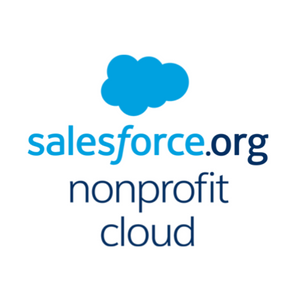Insights
INSIGHTS
All Topics
My Account
Your Questions Answered: How Charity Digital can make your email marketing easier & affordable using the powerful dotdigital platform
27 Feb 2023by James Corcoran
Questions and answers from our Q&A Focus Group: How Charity Digital can make your email marketing easier & affordable using the powerful dotdigital platform on the 27th February 2023
You mentioned keeping down the spammy words. Could you list these?
Here is a link to an article on the Charity Digital website: "How to Prevent Emails Going to Spam" on the Charity Digital website. charitydigital.org.uk/topics/how-to-prevent-emails-going-to-spam-9805
It’s an interesting thing because lots of people will probably want to put the word in free or offer and you can use that but just not on a regular basis. If you use it every now and then, then it probably won’t get caught up in spam. The best thing to do is just to Google it and just to see what the latest spam words are. I would also recommend trying to get the best out of your subject title is the information should be within the first 60 characters. And if you use emojis in your subject title, they don’t get caught up in spam and they can be quite attractive as well to your audience. It depends, obviously, on the nature of the email campaign that you’re sending out.
I had heard that images increase the likelihood of going to spam. Is this the case and if so, how many images would you recommend limiting emails to?
It is the case with Gmail. Gmail is really quite sensitive and the less images you have in your campaign that goes out to lots of Gmail clients, probably the better. I would say 50-50 ratio. So you have 50% images, you have 50% text. Bear in mind if you have an audience full of Gmail addresses, then you probably have to tailor it accordingly and just have very few images. It’s a lot more sensitive. But generally, you shouldn’t really have too much of a problem if you keep to the thumb of rule 50-50.
If the email’s too heavy, it won’t then get delivered. One thing on images- is just make sure that any text that you have in an image, you also have the text as words within the email just so that either if people’s emails don’t load, if they just open it and you’ve only got images, that would just purely be blank. And then apart from that, just for accessibility, if people have voice readers that will read out their emails to them, if it’s just full of images, they’ll just get a blank message.
Please explain external dynamic content and internal?
Internal dynamic content lets you tailor your email campaign, so different groups of your contacts receive different content, images, or calls to action etc.
External dynamic content lets you pull in and populate campaign content using an external URL endpoint. You can pass data to your URL by attaching contact data fields to the query string.
Rather than adding people manually, can we get people added automatically by clicking on a button on our website?
Yes, very, very easily. Now the signup form are simple and efficient and really effective way to obtain supporters and donors and also fundraisers for your organisation. So ,through dotdigital you can easily create the HTML code and you can embed that in a convenient location on your website.
Can you please remind me of dotdigital’s pricing?
We don’t have a set-up fee or charge for uploading/storing your contacts. We have a annual bulk pricing structure whereby you buy email credits upfront and send out emails as and when yo wish so you’re not tied to any monthly bands or excesses.
We are currently offering free email credits if you buy a support package which is a one-off payment for the duration of your account: charitydigital.org.uk/products/products/dotdigital-email-marketing-platform
Is dotdigital compatible with Salesforce?
dotdigital could be compatible with any system. dotdigital is an open source platform. So basically, that means that you can integrate with pretty much any other platform as long as you have the knowhow and there’s a great hub of knowledge. The dotdigital API is based on a family of Rest web services that provides access to a huge range of dotdigital functionality and the API will allow you to automate many of your daily tasks. And so it will carry these out in real time. Now a lot of people do say about Salesforce because it was very, very popular, probably going about 15 years now, a lot of charities did take Salesforce on. dotdigital do have a customised Salesforce app that you can plug in and this gives you the flexibility of going into your Salesforce and actually creating your emails within your Salesforce account and it just speaks to each other: dotdigital.com/partner/salesforce/
How does dotdigital compare against MailChimp?
They are both email marketing platforms so have most of the important features in common, one big difference is that you can use your own live domain for your custom from address in your emails, and dotdigital require that you use a sub-domain or a separate domain to your live website. The primary reason is reputation risk. Regardless of how much care and attention you put into making your marketing emails relevant to your lists, there are likely to be some subscribers that decide they no longer want to receive them. Rather than clicking unsubscribe, some users will just mark your email as spam/junk. This, and other factors, can damage your sending reputation which can lead to you appearing on block-lists for companies like Spamhaus.
Can we import our contacts from MailChimp easily?
Yes, really easily. You just download, but you have to download the address fields as you have them in MailChimp and then you upload them in, make sure you have titles for your columns, you upload them into dotdigital and then you map the titles and it just goes straight in. So the most important thing that you need from MailChimp is, for your GDPR, is actually the created date and the time in MailChimp. And if you bring that over into dotdigital, you have got your record of when that person signed up and when that person was first created in your account. That’s just, you know, to protect your back. But it is really easy. It’s just using an Excel or a CSV file.
Could you tell us of a few issues that people have found with MailChimp?
I think people do come to us because MailChimp have recently put the prices up so they’re looking for another platform that’s sort of competitive as well and that works well for them. Also because MailChimp is an international, it’s the biggest platform around, you could be placed in any type of pool, which is an IP pool with other people that aren’t using it correctly. So supposing you are with a bunch of spammers who are just spamming people all over the place and sending out mass emails and that’s going to affect your reputation. So with MailChimp you can actually use any domain as your from address. With dotdigital, you can’t do that. dotdigital won’t allow you to use your live domain of your website as a from address. They require you to have a sub-domain because if your from address goes down under investigation, for example, and it’s being blacklisted, then your website can be affected as well with that. So dotdigital say that they require a sub-domain.
Is this platform a lot cheaper than MailChimp?
It depends on how many email addresses you have that you are actually uploading and how many you’re sending out. Dotdigtal charges you for the emails that you send out. So that’s why my emphasis was you have to be targeted, you have to be engaging because the mass mailing isn’t the best way forward. And I would say that lots of people do come to us because they can’t afford the MailChimp prices anymore.
We have a number of teams who obviously all want to email our supporters about different things. We are looking at implementing a monthly newsletter. But in the meantime, how many emails would you say are too many to be sending?
The main thing to keep an eye on is your reporting metrics. If you test the waters for a couple of months and see how you’re getting on, you can see whether there’s a drop in unsubscribes or less engaged people and then you know it’s too much. So it also depends on your audience.
I sign up, for example, to health newsletters and I read them every day cause I’m really interested and I’m engaged. But if you’re asking for donations, people rarely respond to something on the first few, especially when they’re asked to participate with, you know, giving their money. So I would say that you have to be frequent with people and if you’re communicating to the same audience, you have to be regular because you need to build up awareness and trust and, ultimately, engagement. I would say at least to the same audience within a four week period.
If you have got really exciting news and calls to action and fundraising and things to tell them and things to say, then you can go for more than that. You can go, you know, for once or twice a week, but you always have to keep an eye on your reporting to see how your email recipients are responding. It’s also a good idea to have a preference centre in there. So you can ask your people that are signing up, how often do they want to hear from you? Even within a thank you email, you could give them the opportunity of sort of choosing how often and also giving them an expectation that they will receive this amount of emails from you. So there’s no set rule for it. It depends on your audience but you have to be regular.
Here at Charity Digital, we actually send out multiple emails per day but we segment who we send them to. So as Liz said about having the preferences there, I will send out emails about products or just the software that we have on the store, whereas someone else may send out an email saying there’s a new podcast available or there’s this webinar coming up or we’ve got a new article. So it’s just all about sort of segmenting your audience into their interests and just making sure that they are getting what they have asked for. And as Liz said, you can see from your engagement stats whether people are interested. So if you’ve got a lot of people unsubscribing as you go along, then maybe you reel it back and send less. But if people are, if you look at your open rate and people are opening and clicking and engaging, then you know you’re on the right track because people want to receive that email.
If you would like to book a demo with Elizabeth, you can do so by clicking here.
More on this topic
Recommended Products
Our Events
Charity Digital Academy
Our courses aim, in just three hours, to enhance soft skills and hard skills, boost your knowledge of finance and artificial intelligence, and supercharge your digital capabilities. Check out some of the incredible options by clicking here.













